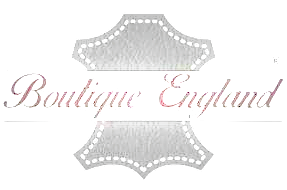
Full-grain leather is a term that often pops up when discussing high-quality leather products. It's revered for its durability, luxurious feel, and natural appearance. In this article, we'll explore the origins of full-grain leather, its unique characteristics, and why it's a favorite among leather enthusiasts.
What is full-grain leather?
Before diving into its origins, let's clarify what full-grain leather actually is. Full-grain leather is the top layer of animal hide, typically from cattle. Unlike other types of leather, it retains the natural grain and imperfections of the hide, which contribute to its distinct appearance.
The Source: Animal Hide
Full-grain leather primarily comes from the hides of cattle, though it can also be sourced from other animals like sheep and goats. The quality of the leather largely depends on the animal's breed, diet, and living conditions. Cattle raised in temperate climates with minimal exposure to barbed wire or other potential sources of damage yield the best hides for full-grain leather.
The Tanning Process:
Once the hides are obtained, they undergo a meticulous tanning process. Tanning is the crucial step that transforms raw hides into usable leather. There are two main methods used for tanning full-grain leather: vegetable tanning and chrome tanning.
Vegetable Tanning
- Vegetable tanning is an age-old method that uses natural tannins found in tree barks and plant matter.
- This process is time-consuming but yields a leather that is more environmentally friendly and develops a rich patina over time.
- It's often used for high-end products like saddles, belts, and premium leather bags.
Chrome Tanning
- Chrome tanning, on the other hand, is a more modern and faster method that uses chromium salts.
- It results in softer and more supple leather, making it suitable for products like footwear and upholstery.
- However, it doesn't develop a patina like vegetable-tanned leather.
Characteristics of Full Grain Leather
Full-grain leather possesses distinct characteristics that set it apart from other types of leather.
Natural Grain
As mentioned earlier, full-grain leather retains the natural grain pattern of the animal hide, giving it a unique and rustic appearance.
Durability
- Full-grain leather is incredibly durable and resistant to wear and tear.
- It can withstand years of use without losing its structural integrity.
Breathability
- Unlike synthetic materials, full-grain leather is breathable, allowing air to pass through.
- This makes it comfortable to wear, especially in clothing and footwear.
Aging Gracefully
- Full-grain leather ages beautifully, developing a patina that tells the story of its use and adventures.
- This patina adds to its character and uniqueness.
Popular Applications
Full-grain leather finds its way into various products due to its exceptional qualities.
Fashion
- High-end fashion brands often use full-grain leather for shoes, wallets, belts, and handbags.
- Its premium feel and timeless appearance make it a favorite among designers.
Furniture
- Full-grain leather is frequently used in the upholstery of luxury furniture.
- It adds sophistication and elegance to living spaces.
Equestrian Gear
- Saddles, bridles, and other equestrian gear benefit from the durability of full-grain leather.
- It can withstand the rigors of horseback riding.
Conclusion
Full-grain leather's journey begins with the hides of animals like cattle, which are carefully tanned using traditional or modern methods. Its natural grain, durability, and aging characteristics make it a top choice for various applications, from fashion to furniture and beyond. Choosing full-grain leather ensures you're investing in a product that will not only stand the test of time but also develop a unique personality over the years.
FAQs
Q1: - Is full-grain leather expensive?
- Full-grain leather tends to be more expensive than other types of leather due to its quality and durability.
Q2: -How do I care for full-grain leather products?
- Regularly clean and condition full-grain leather to maintain its appearance and prevent drying or cracking.
Q3:- Can full-grain leather be used for outdoor products?
- While it can be used for outdoor gear, it may require additional treatment to make it more water-resistant.
Q4:- Does full-grain leather come in different colours?
- Full-grain leather is often available in a range of natural shades, but it can also be dyed to achieve various colours.
Q5:- What sets full-grain leather apart from genuine leather?
- Full-grain leather is the highest quality of genuine leather, known for its natural appearance and durability.

